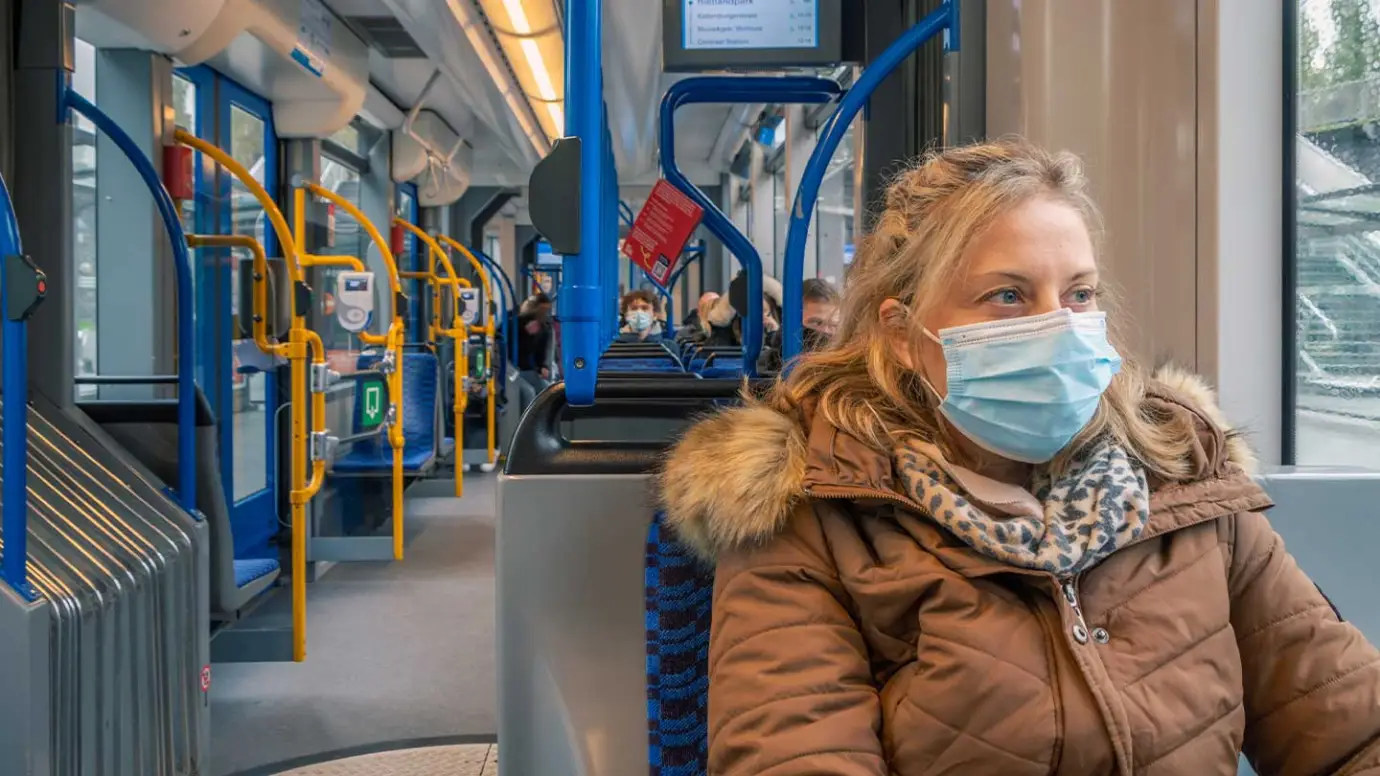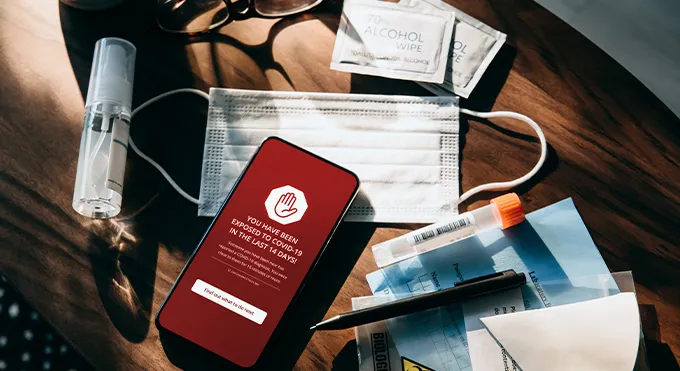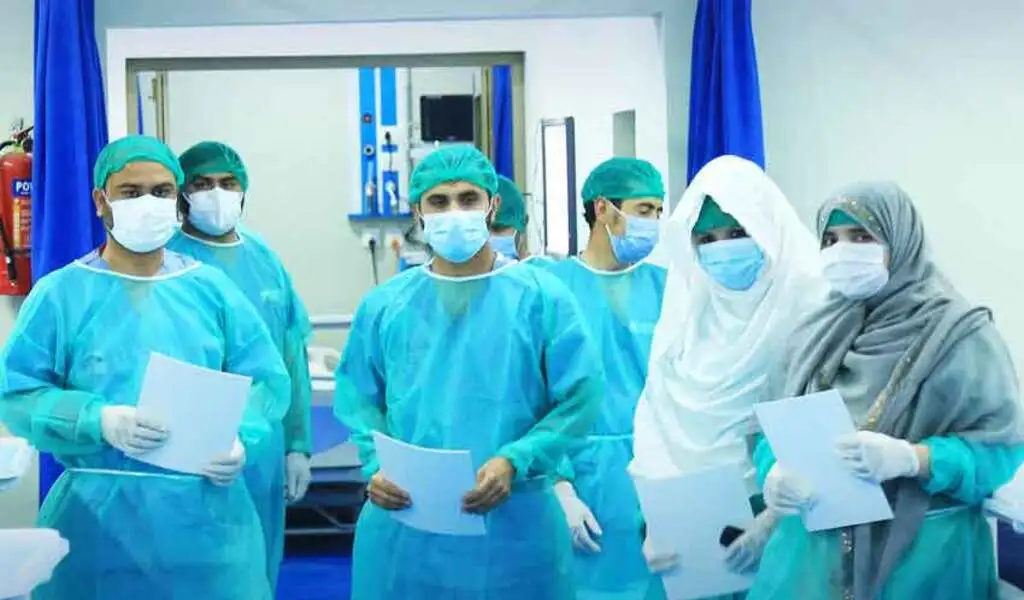(CTN News) – Although the pandemic is no longer a public health emergency, many of my neighbours, acquaintances, and family members continue to contract COVID-19.
Just last summer, a relative contracted COVID-19 while camping. One of my neighbours was ill. Another person had no symptoms but kept his distance as a bright pink line emerged on his test strip every morning.
He shouted updates across the street as we walked our dogs, “The queue was a little fainter today.” “It’s gone.” Finally, “It’s been two days since the queue disappeared.” We and the dogs were overjoyed at the reunion.
In the fall and winter, the reports poured in again: coworkers infected with the coronavirus; the sick neighbour’s family contracted COVID-19 in the fall, long after he had recovered; a friend became ill after visiting a relative and missed Christmas with her parents; and another friend’s cousins tested positive shortly after spending the holidays together.
The experiences of those in my group reflect the peaks and troughs of contagion experienced throughout the United States and other temperate zones worldwide. All of this made me question if SARS-CoV-2, the coronavirus that causes COVID-19, will ever settle down as a virus that only hits during the cold and flu season.
Having a consistent season would make vaccination timing and formulation easier. It may also persuade people that it is prudent to take measures, such as wearing a mask at particular times of the year.
Some new studies indicate that COVID-19 may be a year-round concern, driven more by human behaviour and immunity levels than by weather patterns.
Cold and dry weather promotes the spread of common respiratory viruses (SN: 1/11/23). SARS-CoV-2, like the flu viruses, is more stable at low temperatures and humidity levels.
However, scientists were unsure whether the virus’s stability in well-controlled lab conditions translated to better spread in the real world at specific times of the year, according to Vincent Munster, a virologist at the Rocky Mountain Laboratories in Hamilton, Mont., which is part of the National Institutes of Health in the United States.
Munster and colleagues conducted trials using hamsters as stand-ins for humans. The researchers focused on airborne transmission, the predominant mechanism of COVID-19 distribution, rather than alternative, less likely modes of spread, such as big droplets or contaminated surfaces.
So, the scientists infected one hamster and placed it 90 centimetres apart from a cage containing an uninfected hamster. At that distance, only airborne viruses could reach the uninfected hamster.
The researchers evaluated a standard climate-controlled room temperature (22° Celsius, or around 72° Fahrenheit) with a comfortable relative humidity of 45%.
Other hamsters were tested in cooler temperatures of 10°C, which mimicked autumn and winter in various regions of the world. A third group of animals received the tropical therapy at 27 degrees Celsius and 65 per cent relative humidity.
According to a study published on January 9 in npj Viruses, environmental circumstances did not impact airborne coronavirus transmission. The virus was transmitted across hamsters at equal rates in all environments examined.
“Most of the time, the environmental impact on these viruses is relatively limited because they only stay in the air for a relatively short time,” Munster said. He’s talking seconds to minutes, not hours or days.
As Munster and colleagues have already demonstrated, aerosols can remain in the air for hours, but infection likely occurs much faster, he says.
Typically, an infected person exhales an infectious virus, which someone adjacent inhales. There isn’t enough transit time for environmental factors to impact viral propagation significantly in those circumstances.
According to Munster, the researchers’ main issue was, “Does that mean these viruses don’t have the propensity to become seasonal?” He believes the coronavirus will eventually have a season, but the calendar will not determine it. Instead, he thinks COVID season will be determined by people’s virus immunity (from vaccination, prior infections, or both) and human behaviour.
Another recent study examines the human behaviour component. Researchers at the University of Oxford examined data from a cell phone app used to inform people when they were in contact with someone who tested positive for COVID-19.
The team evaluated over 7 million notices issued between April 2021 and February 2022. The researchers sought to see if they could reliably predict if someone would contract COVID-19 by observing how close people were to infected persons and how long the sick and healthy were together.
According to epidemiologist Christophe Fraser, people frequently believe that “stranger danger” is the greatest risk of becoming infected, although the evidence shows otherwise.
The software was programmed to alert users if they were less than two metres away from an infected individual for 15 minutes. “The risk of transmission was really quite low at that point,” he explained.
Fraser and colleagues reported in Nature on December 20 that the transmission probability increased by 1.1% every hour of exposure and continued to rise over several days. Households represented only 6% of connections but 40% of transmissions.
Brief, casual interactions with strangers, such as at the grocery store, resulted in many contacts but few infections. Instead, the individual who poses the most danger is “somebody you’ve spent a lot of time with: you could have dinner with them, go to the cinema with them, live at home with them, or work next to them in an office,” he says.
This is because infected people constantly exhale the virus, and the longer you are exposed and the closer you are to the source, the more likely you are to become infected.
According to Fraser, other respiratory viruses have seasons that are influenced not only by weather but also by human behaviour. Flu and respiratory syncytial virus (RSV) outbreaks typically occur when students return to school following summer or winter breaks (SN: 8/12/21). Perhaps COVID-19 will follow a similar trajectory, but it could take decades, he says.
Human behaviour can also suppress seasonal viruses, at least for a while. In 2020 and 2021, COVID-19 prevention methods such as social separation and mask-wearing significantly reduced influenza and RSV infections (SN: 2/2/21). However, once the limits were eased, the viruses recovered.
Researchers believe that some of the comeback of seasonal viruses is due to a loss of collective immunity against the viruses, particularly among small children who lack immunity and the elderly, whose immune systems are weakened. Immunity also deteriorates the further you are from a booster shot or virus.
Luca Ferretti, Fraser’s Oxford colleague, believes that changes in human immunity may be the primary driver of COVID-19 seasonality in the future. But that is not what has transpired thus far.
Early in the epidemic, no one was immune to the virus, which allowed it to infect practically everyone. When vaccinations became available and many people developed protection from earlier illnesses or shots, the immune system was able to block or reduce the spread of the virus.
If the coronavirus evolved slowly, like most respiratory viruses do, COVID-19 could have already become a seasonal sickness. However, the coronavirus continues to evolve rapidly, frequently in ways that allow it to bypass immune defences and infect even those who have previously been immune.
For example, the JN.1 variation first appeared in US Centres for Disease Control and Prevention records in October. As of January 20, it accounted for about 86% of cases in the United States. Over 30,000 people were hospitalised as a result of the infection between January 7 and 13.
So far, the largest coronavirus epidemics have occurred when novel variations, such as delta and omicron, that allow the virus to evade antibodies emerged. Nobody knows if the virus still has such spectacular escape moves in its bag of tricks.
The Elusive Goal: Predicting COVID-19 Seasons
In addition to shielding us from COVID-19, human immunity has altered when people are most infectious. Early in the pandemic, persons produced the most virus and were most infectious within the first few days of infection, sometimes before symptoms appeared.
Researchers reported in Clinical Infectious Diseases on September 28 that vaccination protection and past COVID-19 cases have delayed the peak of viral production until four days after symptoms begin.
According to Nira Pollock, a clinical diagnostics expert at Boston Children’s Hospital, the difference is that the immune system fights the virus early in the infection and produces symptoms before viral replication begins.
That is a nice thing. However, it may inadvertently contribute to more infections since it affects when patients receive a positive response from home tests. A positive line on a home test means creating enough virus for the test to detect.
So, with a delay in peak viral generation, you may receive a negative test result while having COVID-19 and being able to transmit it to others. This is why repeat testing is required if you exhibit symptoms or have been exposed to someone who does.
“If you test negative on day one, you are not done,” Pollock explains. “If you continue to be symptomatic, you should repeat your test because your peak viral load may occur on the fourth, third, or fifth day of symptoms.The FDA recommends “repeat testing”. It is on the package.”
It would be wonderful to mark the COVID-19 season on a calendar. At least then, we’d know whether to wear masks with our hats, gloves, or beachwear. There would be less guessing involved in timing immunisations.
For now, however, the coronavirus operates on its constantly changing schedule. We may be able to determine whether it eventually settles as a seasonal virus. The power of our collective immune systems and our willingness to take care to prevent disease from spreading to others may finally wrestle it into seasonal submission.








